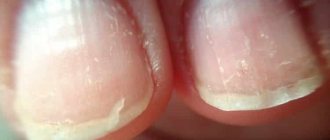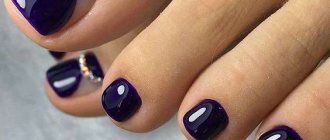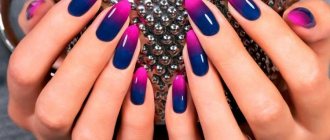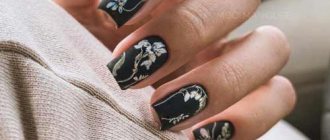Gel polish gives women's hands a well-groomed appearance, makes it possible to grow nails, lasts a long time and pleases with a variety of palettes. However, it can cause the appearance of an unhealthy shade of the nail plates. If your nails have turned yellow from the polish, a manicurist will tell you what to do and how to solve the problem.
You wear bright nail polish
Most often this happens when working with red, yellow, orange, black, blue and purple coatings: the pigments included in the products eat into the nail plate. The varnishes themselves, if they are made by a trusted manufacturer, are harmless, but when they are used, yellow spots may remain on the nails, which do not disappear even after treatment with nail polish remover.

What to do: New York City dermatologist Dana Stern reminds you to protect your nails with base coats when working with bright polishes. She notes that her clients often forget about this habit. In addition, soon after removing the polish, it is worth treating the plates with baking soda and hydrogen peroxide: the mixture will remove any remaining pigment and lighten the nails. After the procedure, you need to take care of nourishing your fingertips - when dehydrated, the plates can become thinner and absorb color more strongly.
What clients don't know yet
When a girl agrees to shellac, she is driven by an understandable desire to remain charming and attractive. It just doesn’t hurt to know the following nuances of applying gel polish:
- Ultraviolet radiation, which allows for rapid drying of the composition, is aggressive to skin cells. Caution should be exercised by those who have moles on their fingers. Those who suffer from dermatitis or are prone to allergic rashes should not dry their manicure in a UV lamp.
- Damage to nails is caused by tight sealing with artificial material; the nail plate does not breathe, dries out and breaks.
- To remove the old coating, masters use a product that also destroys the nail.
Low-quality materials were used in the gel polish coating
Typically, the plates change color if the master used expired or cheap products, and also neglected degreasing and using a primer. In this case, you need to not only lighten your nails, but also strengthen them.
What to do: try to use baths with sea salt, lemon juice, apple cider vinegar or chamomile - mix a tablespoon of the active ingredient with a glass of warm water 1-2 times a week. Soak your hands in the liquid for 10–15 minutes. To consolidate the effect, it is worth doing 8–10 procedures over 2 months.
Diseases that cause yellowing of nail plates
All pathologies that affect the color of nails are conditionally divided into two types: acquired and congenital. One of the common congenital diseases is onychogryphosis. Characteristic features:
- plate seal;
- color change to dark yellow or brown;
- raised nail, surface deformation.
The most common acquired pathologies are:
- “yellow nails” syndrome;
- dystrophy;
- psoriasis;
- fungus;
- dystrophic onychia;
- jaundice;
- liver/vascular/lung dysfunction;
- avitaminosis.
Nail plates may turn yellow during therapy during which antibiotics are taken. In older people, the color of nails changes due to diabetes, rheumatism, and atherosclerosis.
Yellowing of the plates on the hands of women is called dyschromia. Timely diagnosis and adequate treatment helps to quickly eliminate the cause and cosmetic defect.
Fungal infection on nails
Most often it appears on the legs, but the fungus also attacks the arms. If you don’t take action, your nails will become thicker over time and begin to loosen and crumble.
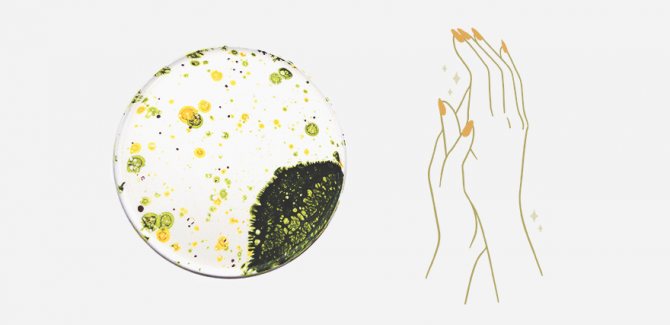
What to do: If you've just encountered yellowing, treat your nail plates with tea tree oil. It will not only lighten your fingertips, but also destroy pathogenic particles. If the nail thickens, immediately contact a dermatologist: he will prescribe antifungal drugs for internal and external use. Read on topic:How to restore nails after summer
Internal reasons
Problems and disruptions in the functioning of the body appear on the nails gradually, affecting their structure, shape and color.
Lymphostasis
Lymphostasis is characterized by retention of lymphatic fluid and its circulation. Its symptoms increase over several years, and the nail quickly loses its ability to grow. In addition to a change in the color of the nail plate from pink to yellow, the disease is also signaled by:
- swollen lymph nodes;
- dizziness and headaches;
- itchy skin;
- swelling of the limbs.
For normal functioning of the lymphatic system, muscle work is necessary, that is, physical activity. Excellent prevention would be swimming, Nordic walking, and taking herbal immunostimulants, such as echinacea.
Techniques and features of foot massage
Oncological diseases
Tumors disrupt metabolic processes, interfering with normal blood circulation and transportation of nutrients.
With oncology, the nail plate slows down in growth and changes color, the hole and eponychium disappear. A malignant neoplasm “robs” the nails, taking away much needed calcium and phosphorus.
Onychogryphosis
Typically, onychogryphosis indicates the presence of pathologies in the body, for example, complications of diabetes.
Lyudmila Sheveleva
Doctor, pharmacist
Ask a Question
Doctors do not hesitate to make a primary diagnosis - the nail becomes like a griffin's claw. At an early stage, it thickens, loses its transparency, turns dirty yellow, becomes distorted, and even grows into the skin. If left untreated, the plate becomes twisted.
Onychodystrophy

Onychodystrophy is a disease associated with metabolic disorders. Yellowing nails are accompanied by fragility and slow growth. The color of the nail plate in the case of onychodystrophy can be from yellow to brownish-yellow. The pathology is also visually manifested by clouding, thinning, delamination, and roughness of the nail plates.
Onychodystrophy, in turn, signals the presence of another disease (congenital or acquired), for example:
- syphilis;
- measles;
- dysentery;
- typhoid fever;
- varicose veins
Psoriasis
Sometimes psoriasis develops almost imperceptibly, without affecting the skin at first. At first, nails can help determine the presence of the disease. The most commonly observed manifestations are:
- yellowing accompanied by clouding of the nail plate;
- at the side ridges, the nail plate may be partially or completely torn away from the bed;
- the appearance of hemorrhages under the nails, coloring the nail black, bluish or purple.
Lyudmila Sheveleva
Doctor, pharmacist
Ask a Question
The first discomfort occurs as the nail thins and separates from the bed. Usually these are twitching pains and unbearable itching. Please note that scratching your skin involuntarily can damage it. Staphylococcus aureus and epidermal staphylococci penetrate into microcracks, causing a severe infectious and inflammatory process.
Fungal infection

The second most common reason after the use of low-quality materials. Onychomycosis most often begins in the feet and affects the toenails. The fungus rarely develops on the hands, but can be transferred to the hands if left untreated.
What indicates a developed infection:
- whitish stripes and spots against a general yellow background;
- loss of shine and transparency;
- delamination, deformation of the nail;
- severe pain when detaching the plate from the nail bed;
- persistent unpleasant odor.
With a fungal infection, the nail not only changes color, but can also become thicker or critically thinner - it all depends on the type of fungus.
Review of antifungal drugs for nails
Lung diseases
Any abnormalities in the functioning of the lungs, including tuberculosis, significantly reduce immunity and disrupt metabolism. In this case, the body begins to intensively fight the ongoing disease, leaving “for later” care of nails, hair and other minor parts of the body.
Characteristic for pulmonary diseases:
- difficulty breathing;
- pain in the chest area;
- cough, sometimes with bloody discharge.
Nails usually turn yellow during the active development of the disease. It is often possible to diagnose pulmonary diseases before yellowing of the nail plate appears.
Do you have psoriasis?
Sometimes it can appear along with rashes on the head and torso: as a rule, in this case the nail becomes cloudy and covered with grooves.
What to do: if you encounter complications, contact a dermatologist immediately. Be mentally prepared for the fact that treatment will take a long time. During this period, it is necessary not only to follow the specialist’s instructions, but also to intensively care for your nails - cut them short, protect them from microtrauma, avoid hardware manicure, and cover the plates with clear varnish. In addition, it is worth performing mechanical work only with gloves - this will protect your fingers from damage.
Cosmetical tools
Representatives of the fair sex who do not trust folk remedies, but want to whiten their nails after shellac, can purchase special cosmetics:
There is a large selection of nail care products in cosmetics and perfume stores, so every woman can find the best way to get rid of yellow nails.
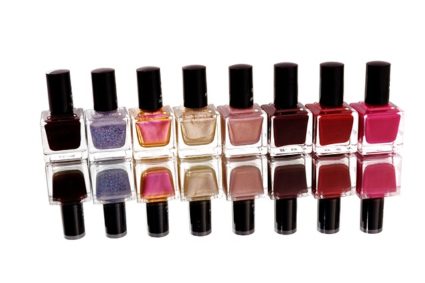
It's worth getting a medical examination
Sometimes nails can turn yellow due to disorders of the body: with hypothyroidism, Itsenko-Cushing's disease, diabetes, diseases of the cardiovascular system, oncology, tuberculosis. They develop slowly and imperceptibly, however, by identifying changes in appearance in time, you can get rid of serious ailments.
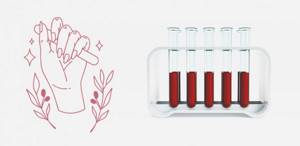
What to do: make an appointment with a therapist and explain the situation. In the future, he will make an appointment with an endocrinologist, cardiovascular surgeon, or oncologist. You may also need to undergo general tests and a physical examination.
Treatment

Treatment of yellowness requires a comprehensive examination. Any home methods are applicable only when the reason lies in:
- vitamin deficiency. At the same time, home and cosmetic products are used as an additional method to taking vitamin complexes;
- consequences of using low-quality coating materials;
- temporary yellowing due to taking antibiotics, smoking, excessive coffee consumption, and so on.
These listed cases are the most common causes of yellowing nails.
In other cases, treatment is required under the supervision of a dermatologist or other specialist, depending on the nature of the disease. In such situations, it is necessary to get rid of the cause, with the cure of which the yellowness will disappear.
- for fungal infections, antifungal drugs are prescribed in the form of tablets (Lamisil, Nizoral), varnishes (Batrafen, Lamisil), solutions (Exoderil);
- for diabetes, specialized medications are prescribed to normalize glucose levels;
- for syphilis - outpatient treatment with injections, droppers and tablets.
If the examination did not reveal any diseases, then try to resort to the help of cosmetic and traditional methods of treating yellowness.




